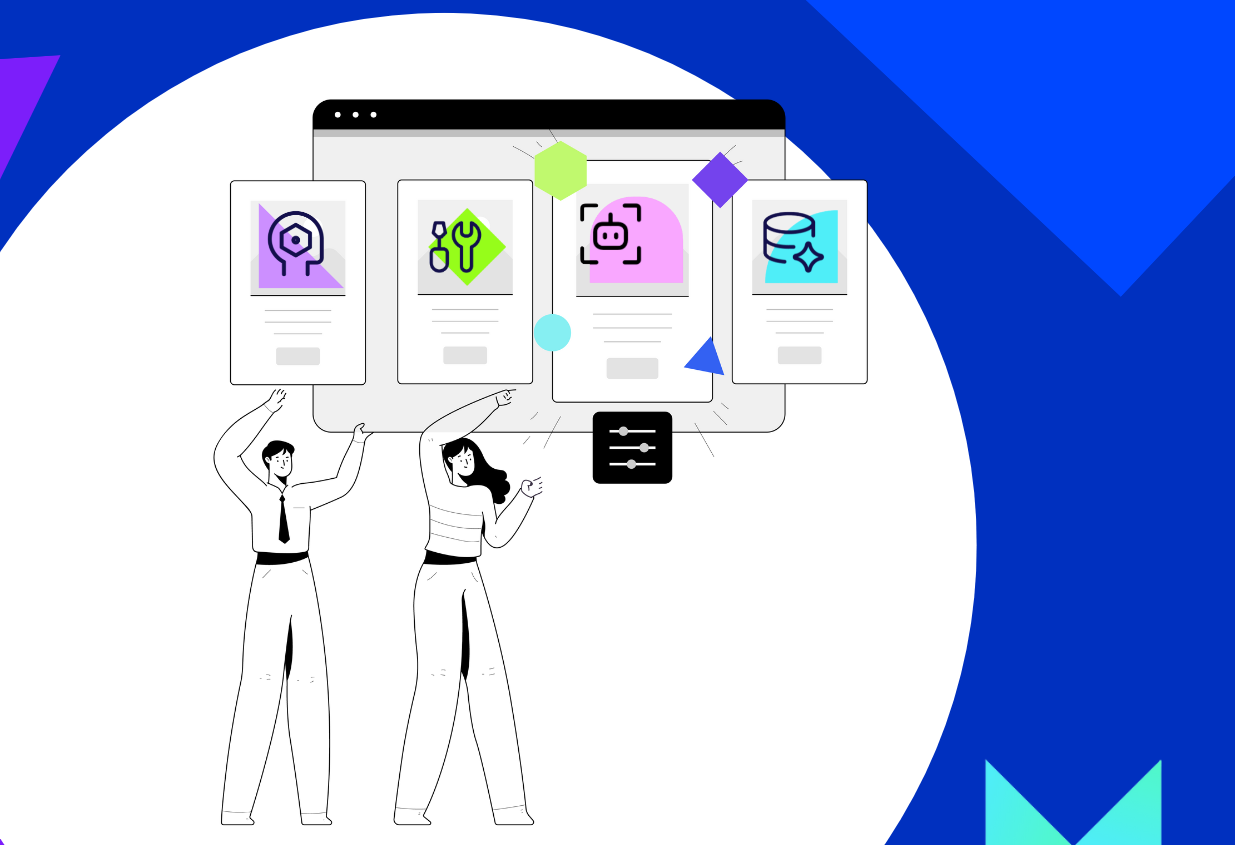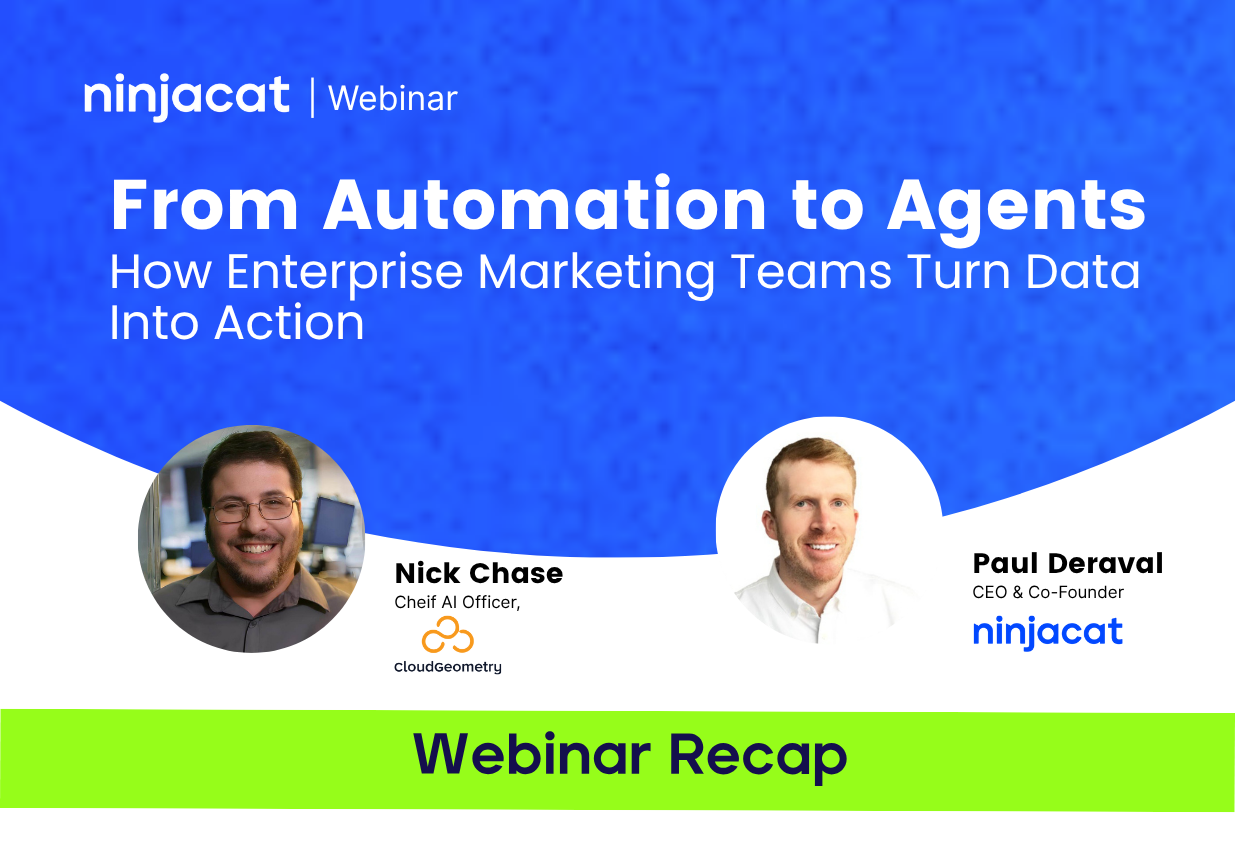Organizing Information in the Age of AI
.png)
If your teams are still throwing dashboards and CSVs at an LLM and hoping for magic, you’re not alone—and you’re setting yourself up for disappointment. As information architect and founder Jessica Talisman puts it, most organizations hand AI a syntax soup and expect wisdom. The fix isn’t another model. It’s semantics.
Jessica has been organizing information since the late ’90s—starting on Steven Spielberg’s Shoah Foundation project, one of the largest visual history catalogs in the world. She’s helped enterprises translate messy, overlapping labels into clean, machine-readable knowledge. Her message for marketing and data leaders: before you scale AI, build a semantic foundation.
Start With Meaning, Not Menus
Most orgs “model” their world as UI menus and SQL tables. That’s syntax—useful for humans clicking around, not for machines reasoning. Jessica’s definition of information architecture is full-stack: yes, the navigation and UX, but also the semantic backbone underneath.
“We expect AI to be an oracle for our syntax-rich systems without delivering the semantics.”
Why it matters: Without explicit definitions and relationships, your AI will guess. That’s how you end up with flaky enrichment, brittle RAG answers, and conflicting KPIs in the same meeting.
What to build:
- Controlled vocabulary → the agreed words and definitions.
- Taxonomy → those terms in a hierarchy (parent/child).
- Thesaurus → synonyms, acronyms, alternate labels.
- Ontology → the richer “logic of the domain” (entities, attributes, relationships, constraints).
Think of it as leveling up from a parts list to a reasoning model.
Chunking Isn’t Context
“We’ve leaned on chunking and context windows to fake context.”
Breaking documents into 2–6 minute clips or text chunks helps retrieval. Jessica did it at scale in the VHS era. But chunking without semantics just surrounds your question with more words.
The upgrade: Pair RAG with a knowledge model that tells the machine what a thing is, how it relates to other things, and which labels are equivalent. That’s the difference between “find me mentions of accessories” and “retrieve sporting-goods accessories but not fashion accessories.”
Make Terms Wear “Backpacks”
“I like to think of a vocabulary term wearing a backpack. Inside are its superpowers: synonyms, acronyms, alternate labels.”
If your teams say Azure, Microsoft Azure, MSFT Azure, and Azure Cloud interchangeably, your reporting—and your AI—will fracture. Jessica’s go-to pattern is SKOS (Simple Knowledge Organization System): a lightweight way to declare broader/narrower relationships and stack all those alternate labels in the “backpack.”
Result: Search, dashboards, and agents all resolve “same-ness” the same way. No more dueling terms, no more misplaced bets on fractured data.
You Already Use Ontologies—Own It
“Half the internet runs on schema.org. That’s an ontology. If you’re using it—or Open Graph—you’re already doing this.”
Your web team likely publishes schema markup. That’s a head start. Bring the same discipline inside your data estate: campaigns, conversions, creative variants, lead stages, product lines. Don’t let Google’s or Meta’s definitions quietly run your business logic.
“Touch Grass” Definitions
“If your internal definition strays from the common definition, disambiguate.”
Words like “accessories” or “leads” explode without context. Jessica’s rule: align internal language with the real world—or clearly document where you diverge. That single act reduces reconciliation time across platforms and makes AI outputs feel eerily “on brand” because the model finally speaks your dialect.
Small Wins Beat Big Overhauls
“Don’t boil the ocean. Start with a low-fidelity model, operationalize it, and earn trust with results.”
Leaders want outcomes, not ontological purity. Jessica recommends piloting with a controlled vocabulary + light taxonomy in a single domain (e.g., Paid Search → Branded/Non-Branded → Local). Wire it into a concrete use case—RAG answers, anomaly alerts, or negative keyword suggestions—and measure the lift.
Pro tip: Partner with ML engineers early. A taxonomy becomes a decision tree for routing vectors, classifying new terms, and handling long-tail noise.
Kill “Move Fast and Break Things” (For Data Models)
“Would you hire a data modeler whose mantra is ‘break things’?”
Speed still matters. But Jessica’s warning is clear: sloppy semantics compound. Every synonym, every ungoverned column name, every platform mismatch multiplies downstream—through dashboards, forecasts, and AI agents.
Swap the mantra for this: move deliberately, validate definitions, and automate the boring parts (governance, label reconciliation, alt-label mapping).
Actionable Playbook: The Ontology Pipeline (Starter Edition)
Pick a thin slice
Choose one high-visibility domain (e.g., Paid Social or Lead Stages). Avoid cross-org sprawl at first.
Draft the controlled vocabulary
For 50–150 terms: write clear definitions, note owner, and capture alt labels (synonyms, acronyms, platform-specific names).
Shape a simple taxonomy
Arrange terms into parent/child and broader/narrower. Keep it shallow; depth 2–3 is fine.
Add the “backpacks”
For each term, list alt labels you actually see in the wild (BI fields, platform exports, team slang).
Operationalize one use case
For RAG, use the shared vocabulary to normalize queries and re-rank results; for QA, flag metric collisions such as Leads vs. Conversions vs. Sales; and for Alerts, tie taxonomy nodes to anomaly detection and generate talk-tracks (e.g., ‘Spend spiked in Non-Branded Search; CPM steady; CPC up 18%’).
Govern lightly, iterate weekly
Add new labels when they appear, not quarterly. Track changes. Socialize before you standardize.
Scale to ontology where it pays
Only when you hit repeat pain—like cross-domain reasoning (Budget → Channel → Creative → Outcome)—add richer relationships and constraints.
The Human Work Behind Machine Intelligence
“This is cross-team work that touches humanities as much as engineering.”
Jessica’s closing reminder: semantics is a people project. It asks teams to pause the treadmill, question assumptions, and agree on meaning. It’s ego-light, governance-lite, results-heavy. And it’s the shortest path to AI that actually improves margins instead of generating pretty paragraphs.
Don’t buy another “AI layer” until you invest in the semantic layer. Make your terms wear backpacks. Touch grass with your definitions. Start small. Ship wins. Then let the machines do what they’re good at: using your meaning to move your business.
Listen now: Spotify | YouTube | Apple
Connect with Jessica: LinkedIn | Website
Subscribe to What Gets Measured for more conversations like this.


.png)

